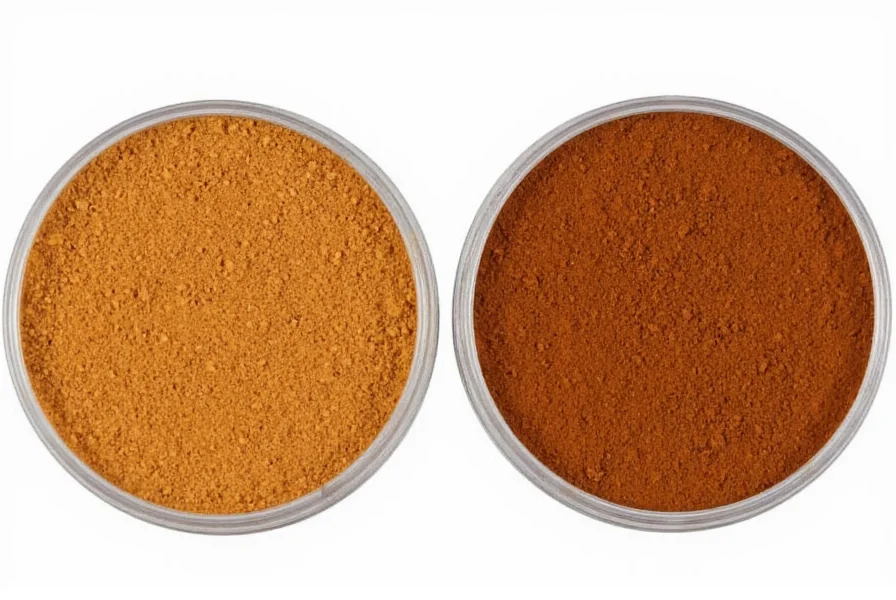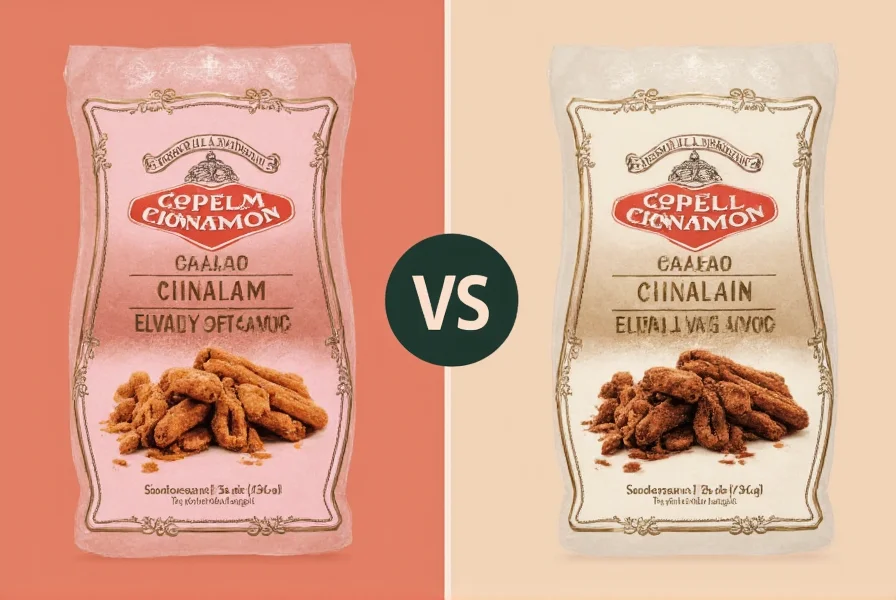When comparing cinnamon varieties, understanding the critical differences between Ceylon and Cassia types is essential for both culinary applications and health considerations. This comprehensive comparison examines the botanical distinctions, chemical compositions, health implications, and practical usage recommendations to help consumers make informed choices.
Understanding Cinnamon Varieties
Cinnamon isn't a single spice but rather encompasses several related species. The two primary types found in markets worldwide are Ceylon cinnamon (Cinnamomum verum, also called Cinnamomum zeylanicum) and Cassia cinnamon (Cinnamomum cassia), often labeled simply as “cinnamon” in North America and Europe. Despite their similar appearance and flavor profiles, these varieties have significant differences that affect both culinary applications and health considerations.
Physical and Botanical Differences
Ceylon cinnamon, native to Sri Lanka and southern India, features multiple thin, delicate layers that form a tight, hollow tube with a light brown color. Cassia cinnamon, primarily grown in China, Indonesia, and Vietnam, consists of a single, thick, rough layer with a darker reddish-brown hue. The bark structure differs because Ceylon is harvested from younger trees, while Cassia comes from older bark that's harder and more rigid.
| Characteristic | Ceylon Cinnamon | Cassia Cinnamon |
|---|---|---|
| Scientific Name | Cinnamomum verum | Cinnamomum cassia |
| Origin | Sri Lanka, India | China, Indonesia, Vietnam |
| Bark Structure | Multiple thin layers, soft, brittle | Single thick layer, hard, rough |
| Coumarin Content | 0.017-0.114 g/kg (very low) | 1.03-6.53 g/kg (high) |
| Flavor Profile | Mild, sweet, complex, citrus notes | Strong, spicy, more intense |
| Price | Higher (3-10x Cassia) | Lower |
Chemical Composition and Health Implications
The most significant difference between ceylon cinnamon vs cassia cinnamon lies in their coumarin content. Coumarin, a naturally occurring compound, can cause liver damage when consumed in high amounts over time. European Food Safety Authority (EFSA) established a tolerable daily intake (TDI) of 0.1 mg coumarin per kilogram of body weight. For a 70 kg adult, this equals approximately 7 mg daily.
A single teaspoon (2.6g) of Cassia cinnamon typically contains 5.8-12.1 mg of coumarin—exceeding the recommended daily limit. The same amount of Ceylon cinnamon contains only 0.01-0.1 mg, making it safe for regular consumption. This distinction is particularly important for individuals with liver conditions, those taking medications metabolized by the liver, or people using cinnamon supplements.

Culinary Applications and Flavor Profiles
Ceylon cinnamon vs chinese cinnamon offers distinct flavor experiences that influence their culinary applications. Ceylon's delicate, sweet profile with subtle citrus notes works well in dishes where cinnamon should complement rather than dominate—such as custards, fruit compotes, and delicate baked goods. Its lower coumarin content also makes it preferable for daily use in beverages like coffee or tea.
Cassia's stronger, more intense flavor stands up well in robust recipes like curries, spice blends, and hearty baked goods where its presence should be prominent. Many commercial cinnamon products, including most store-brand ground cinnamon in the United States, are actually Cassia, often mislabeled simply as “cinnamon.”
Health Benefits Comparison
Both varieties contain cinnamaldehyde, the compound responsible for cinnamon's characteristic flavor and many health benefits, including potential blood sugar regulation and anti-inflammatory properties. Research on ceylon cinnamon benefits for diabetes shows promising results, though most studies haven't distinguished between types.
However, the high coumarin content in Cassia creates a risk-benefit balance that doesn't exist with Ceylon. For individuals seeking regular cinnamon consumption for potential health benefits, Ceylon provides the therapeutic compounds without the coumarin-related risks. This makes ceylon cinnamon vs cassia cinnamon a critical consideration for long-term dietary inclusion.
How to Identify Authentic Ceylon Cinnamon
Identifying true cinnamon can be challenging due to inconsistent labeling practices. Look for these characteristics when evaluating ceylon cinnamon vs regular cinnamon:
- Physical structure: Ceylon forms multiple thin, papery layers that crumble easily when bent
- Color: Light tan to medium brown (Cassia is darker reddish-brown)
- Texture: Soft and brittle (Cassia is hard and difficult to break)
- Labeling: Should specify “Ceylon,” “True Cinnamon,” or Cinnamomum verum
- Price: Significantly more expensive than standard “cinnamon”
When purchasing ground cinnamon, look for specialty brands that explicitly state they sell Ceylon variety, as most generic ground cinnamon is Cassia. Reputable health food stores and specialty spice merchants are more likely to carry authentic Ceylon cinnamon.

Practical Recommendations for Consumers
Understanding ceylon cinnamon vs cassia cinnamon differences leads to practical usage guidelines:
- For daily consumption: Choose Ceylon if consuming more than 1 teaspoon daily
- For baking: Use Cassia in robust recipes where strong flavor is desired; Ceylon in delicate desserts
- For beverages: Ceylon is preferable for daily use in coffee, tea, or smoothies
- For supplements: Verify which type is used and check coumarin content
- For children: Ceylon is safer due to lower body weight and developing systems
The European Union has established maximum coumarin levels in foods (50 mg/kg for traditional and seasonal foods, 5 mg/kg for daily consumption products), which has led to increased availability of Ceylon cinnamon in European markets. In the United States, where regulations are less stringent, consumers must be more vigilant about identifying cinnamon types.
Conclusion
When considering ceylon cinnamon vs cassia cinnamon, the choice depends on intended use and consumption frequency. For occasional use in strong-flavored dishes, Cassia remains a cost-effective option. However, for regular consumption, culinary applications requiring subtlety, or health-focused usage, Ceylon cinnamon's superior safety profile and delicate flavor make it the better choice despite its higher price. Understanding these distinctions allows consumers to maximize both culinary enjoyment and health benefits while minimizing potential risks.
Frequently Asked Questions
Is Ceylon cinnamon better than Cassia for diabetes management?
Both types show potential blood sugar regulation benefits due to cinnamaldehyde content. However, Ceylon cinnamon is preferable for regular, long-term use in diabetes management because of its significantly lower coumarin content. Since diabetes often requires ongoing dietary management, the safety profile of Ceylon makes it the better choice despite similar therapeutic compounds in both varieties.
How much Ceylon cinnamon can I safely consume daily?
Due to its very low coumarin content (0.017-0.114 g/kg), you can safely consume up to 1-2 teaspoons (3-6 grams) of Ceylon cinnamon daily without coumarin-related concerns. This is substantially more than the safe limit for Cassia cinnamon, which should be limited to less than 1 teaspoon (approximately 2.5 grams) per day for most adults due to its high coumarin levels.
Can I substitute Ceylon cinnamon for Cassia in recipes?
Yes, but with flavor adjustments. Ceylon has a more delicate, sweeter profile compared to Cassia's stronger, spicier taste. When substituting Ceylon for Cassia, you may need to use 25-50% more to achieve similar flavor intensity. Conversely, when replacing Cassia with Ceylon, start with the same amount and adjust to taste. The substitution works best in recipes where a subtler cinnamon flavor is acceptable.
Why is most cinnamon in supermarkets Cassia rather than Ceylon?
Cassia dominates supermarket shelves primarily due to lower production costs and higher availability. Cassia trees mature faster and produce more bark per tree than Ceylon cinnamon trees. Additionally, Cassia's stronger flavor appeals to many consumers accustomed to its more intense profile. Historically, labeling regulations haven't required distinction between types, allowing Cassia to be marketed simply as “cinnamon,” while Ceylon is typically labeled specifically as “Ceylon” or “True Cinnamon.”











 浙公网安备
33010002000092号
浙公网安备
33010002000092号 浙B2-20120091-4
浙B2-20120091-4